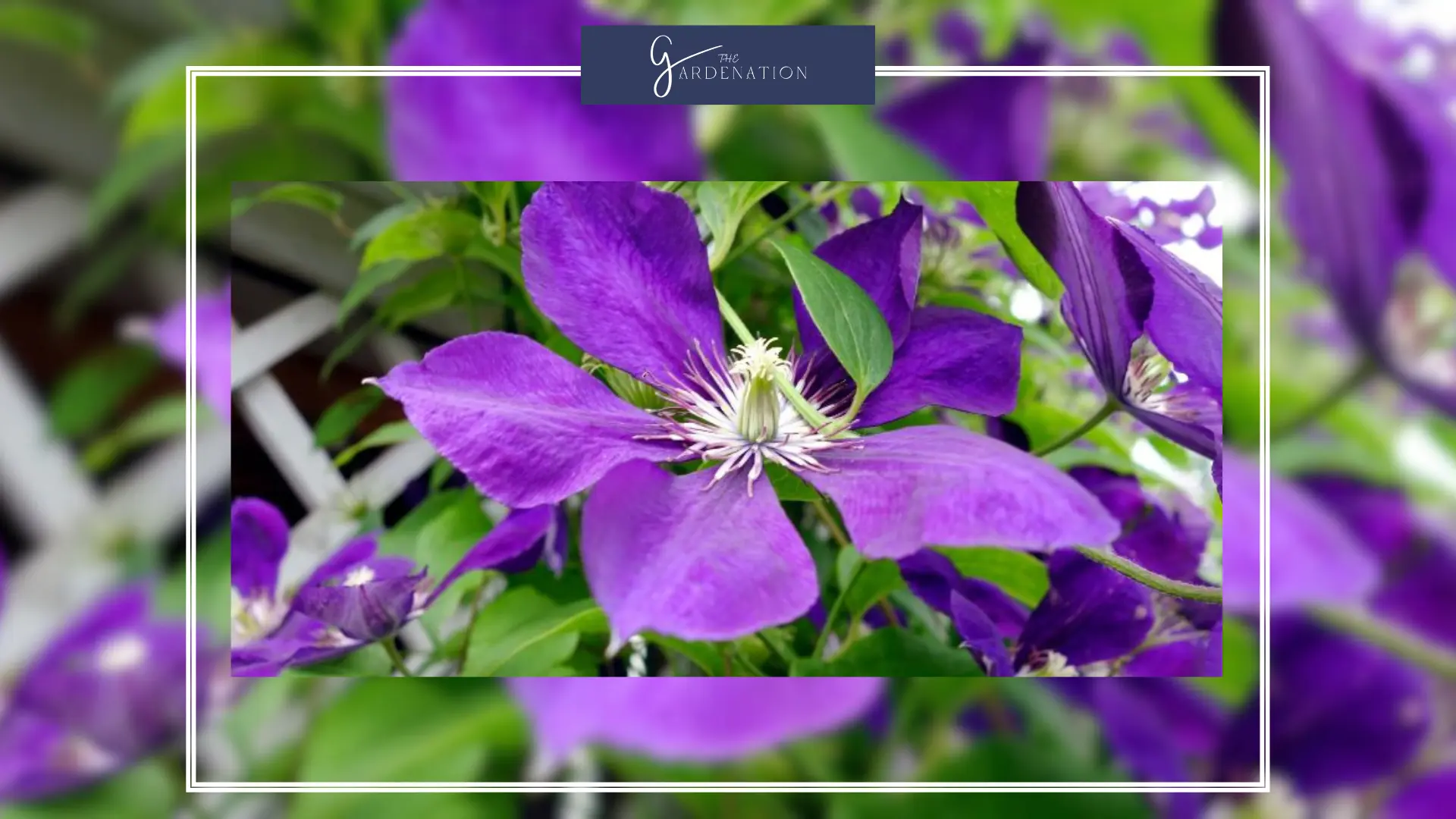10 Climbing Plants With Purple Flowers
In my free time, I love to read books, use my laptop to do stuff in my garden, enjoy nature and admire my efforts in beautifying my garden. But strong sunlight could be a serious concern during this time. So to avoid sunlight I like to spend my time under the shade of trees or roofs that I built using climbers. Climbing plants with purple flowers can form a beautiful shade where I can enjoy my free time in my garden.
There are various different types of climbers- if found in tropical areas they are called liana and if found in other environments they are described as vines. These vines come in a variety of shapes, sizes and colors. Some of them blush with fruits while others can have clusters of beautiful flowers, or one can have evergreen types of climbers depending upon personal choice and preferences.
These climbers can have various benefits due to their wonderful growth habit. In rooftop gardening their importance, I have already described that these climbers can be used as shades and in vertical gardening they can be used as natural vertical walls providing a great and natural aesthetic look to the garden. In this article I’ll focus mainly on varieties of climbers with purple flowers and purple colors.
Types of Climber Plants
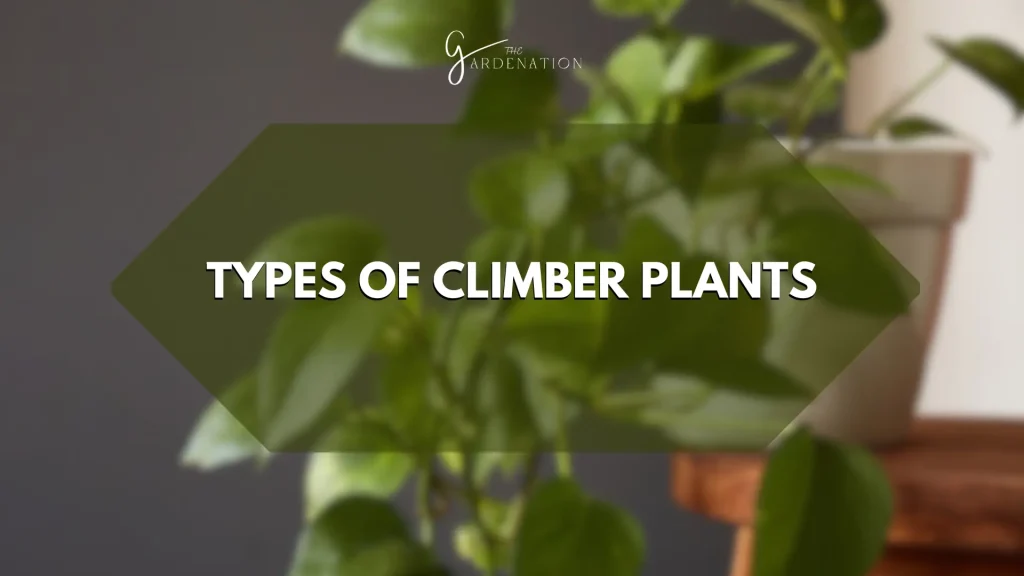
Before moving forward let us understand what climbers are and how many types of climbers we can get. This will help a person to make the best choice for the garden. In general there are thousands of different types of climbing plants or vines. However main categories of these plants are as follows:
- By Climbing Mechanism:
Vines are divided into twiners, tendrils, scramblers and clingers according to their climbing mechanism.
- Twiners- These climbers are with long, elastic stems that wrap around the supports like trees, trellises, even metal rods and any type of support provided to them. The tips of these plants have special sensors that promote its growth upwards around the support. The growth is mostly seen in a circular counter-clockwise pattern.
These plants are adapted to find their own way towards survival. However in their race they can cover other plants unintentionally harming them, so it is recommended to provide resilient and artificial support to them. Examples are morning glories, clematis and honeysuckle.
- Tendril Climbers- The tendrils are thin, thread-like structures that grasp other objects for their support. However tendril is not the main stem but are thin structures emerging through the main stem.
- These tendrils have specialized leaves, stems or stipules that play their role in its growth. These are highly adaptable in their growth and where they find support they increase their growth, thus they are important shade climbers. However the entire main stem is less likely to wrap around the support. Example:peas, passion flowers, grapes.
- Clinging Climbers- Unlike twinners and tendrils, clingers don’t wrap around or grasp support, rather they have special adhesive mechanisms for their upward growth. These are sticky and directly attached to the surfaces using specialized mechanisms.
For more information about Trees you can visit: How To Remove Palm Tree Stump
Various mechanisms of adhesion involve aerial roots systems (possess adhesive aerial roots that act as suction cups) these roots secrete a sticky substance that bonds them firmly to rough surfaces. Adhesive pads that have special pads along their stems and chemical adhesion mechanism. These are low maintenance and fast growing varieties that are highly adaptable. Example: ivy, Virginia creeper.
- Scramblers- These plants have long sprawling that they use to push their way through other plants or lean on supports. These are long and slender and grow horizontally until there is something to support them. These have hooks and thorns that grasp on support in order to climb. Examples include roses, black berries and raspberries.
- By Growth Habit
By growth habit we classify vines as evergreen and deciduous.
- Evergreen Climbers- These plants keep their leaves all year round. They are excellent choices in vertical gardening and keep your walls and garden green all year round. Moreover these varieties are highly resilient and easy to care for.
Using evergreen varieties can be competitive for other plant varieties planted in irregular manners. Examples: Jasmine, holly.
- Deciduous Climbers- Vines that shed their leaves are deciduous climbers. These are great varieties to be used as shade in summer and provide sun penetration in winters making them a good ecosystem balancer.
Deciduous vines contain flowers and fruits for spring and summer season and when falls begins the leaves change their color providing a beautiful sight and eventually in winters the leaves begin to fall. Examples are grapes and wisteria.
- By Flowering
- Foliage Climbers- TThey are grown for their green leaves rather than flowers. Mostly these varieties are evergreen and used for making green walls and roofs. Examples of foliage climbers include ivy, pothos, philodendron.
Large varieties can be used in gardens while small varieties are suitable indoors in pots and hanging baskets. They provide a streak of natural look to indoor spaces.
- Flowering- Many deciduous and fruiting varieties of vines fall in this category. Variety of colorful flower producing vines are available such as honeysuckle, trumpet, roses. These climbers attract insects and pollinators to the garden increasing production of nearby varieties and enhancing the overall ecosystem of the garden.
In landscapes and the world of ornamental plants flowering climbers are greatly important varieties of plants.
Depending upon the personal preference and space available one can choose the best variety of purple flower climbers for the garden. But one must first consider the local climate and conditions before planting the variety.
Purple Flower Climbers
For the beautiful landscape in the garden purple colored flowers are an excellent choice. Various varieties of climbers with purple flowers with distinct characteristics are present that can be used to enhance the overall beauty of a place. Few varieties of climbing plants with purple flowers are listed below in detail along with their mature size, USDA Hardiness zones. To get more knowledge about flowers and gardening Also checkout: 8 Grass Like Plant With White Flowers
1. Clematis Blue Light
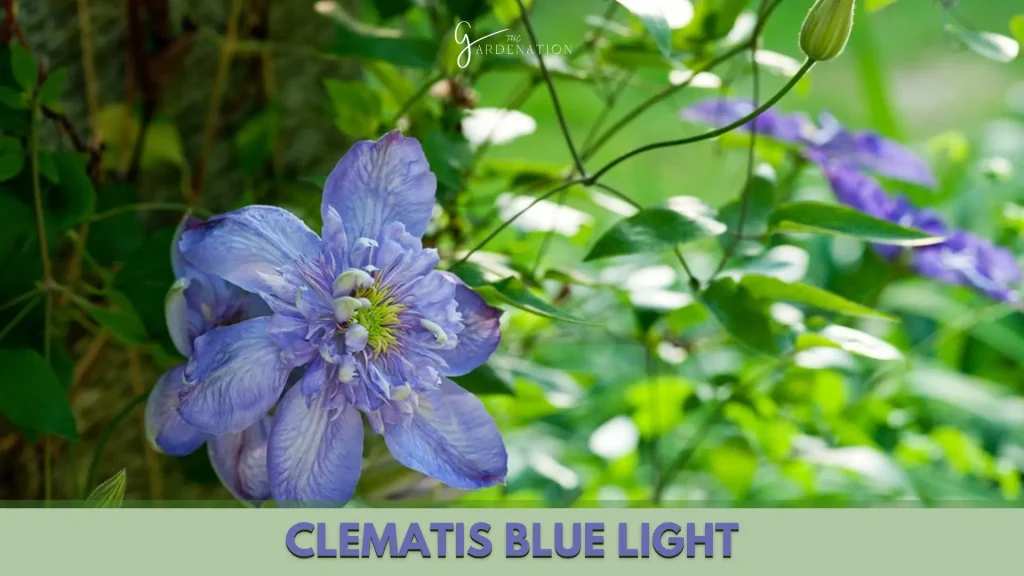
Clematis viticella
- Mature Size- 8-10ft wide, 10-20 ft height
- Hardiness Zone- 4-9
- Category- Twining/ Deciduous
Clematis Blue Light is an excellent climbing variety covered with vibrant vivid lavender- blue colored non-fragrant blooms. Flowering starts in May- June and late with repeated flowering in late summer. This variety prefers full sun to partial shade for best flowering.
Plants require well drained soil with no over-watering. Early spring or fall must be considered as its planting season. Proper support and application of fertilizer must be regularly done for best growth of climbers. Pruning of dead mass and over spread must be done for the best look. Overall this variety is easy to care for and disease and pest resistant
2. Hyacinth Bean Vine
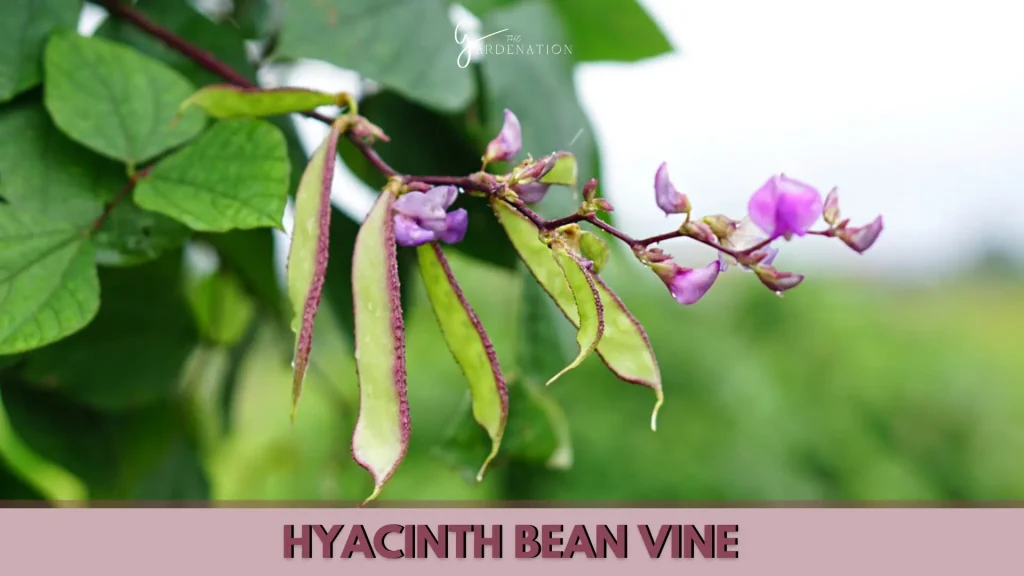
Dolichos lablab
- Mature Size- 10-20 ft wide and 10-30 ft tall
- Hardiness Zone- 3-10
- Category- Twining
Also known as lablab bean, hyacinth bean vine is a versatile climber that offers edible beans along with beautiful colored flowers. During summer and fall in warmer climates it produces continuous non- fragrant purple blooms with addition of white and pink flowers.
It is a fast growing variety recorded as annual in cooler zones and perennial in warmer zones. Lablab prefers full sun with well drained and fertile soil. Compost or manure addition can favor its growth. Watering must be done regularly, especially during hot and dry weather. During the growing season proper watering and fertilizing must be considered. Other benefits of this variety include nitrogen fixation and attracting butterflies and birds for food and pollination.
3. Wisteria
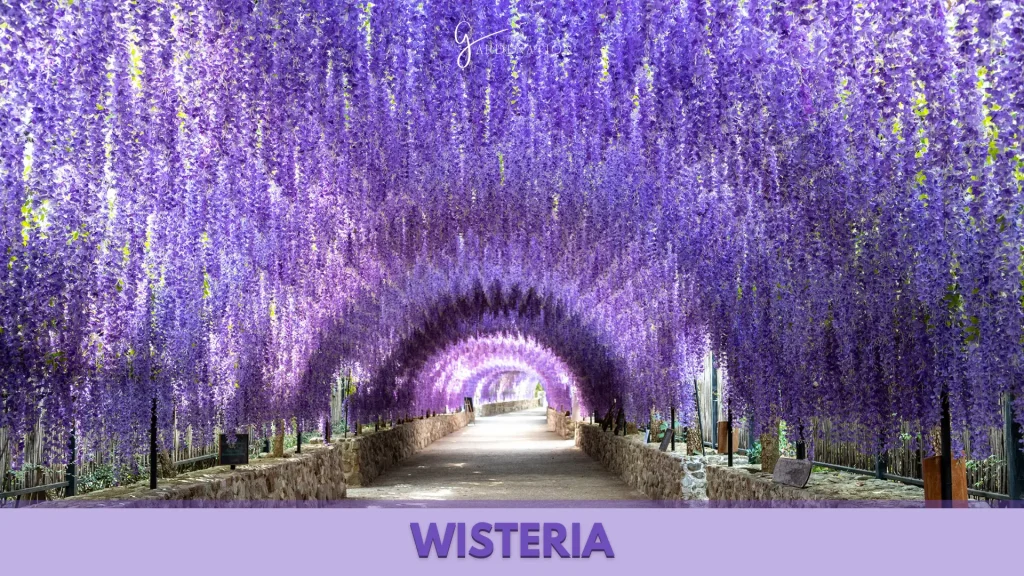
Wisteria floribunda
- Mature Size- 20-30 ft width, climbed 30-50 ft
- Hardiness Zone- 5-9
- Category- Twining/ Deciduous
It is a highly elegant ornamental plant, providing a waterfall-like appearance of fragrant purple colored flowers. It flowers during spring and mid late summer for some varieties. Full to partial sun is preferred for their growth with moist and fertile soil but not water logged.
Very vigorous grower, require significant support and regular pruning. This variety has few demerits such as it can damage weak structures and can even harm nearby plants. Its seeds are poisonous. Overall it is beautiful but invasive plant
4. Passion flower
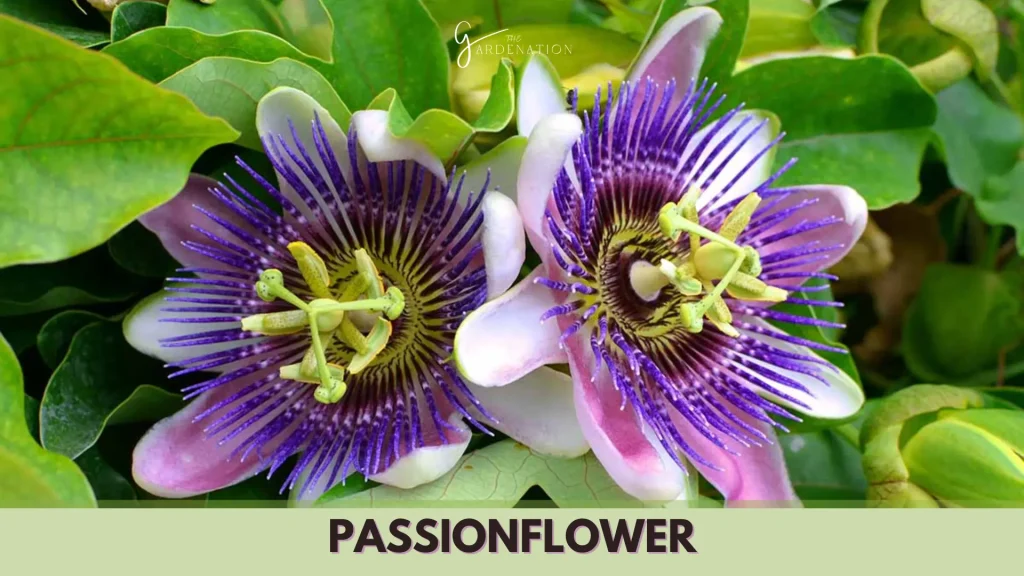
Passiflora incarnata
- Mature Size- 10-20 ft wide, 20-30 ft high
- Hardiness Zone- 7-11
- Category- Tendril Climber
Passion flowers are native to the southeastern US. It has herbaceous shoots and sturdy stems. The leaves are lobed and have distinct edges. Flowers of this variety are the most attractive feature as it produces vibrant magenta to blue colored flowers. Thus this variety is a beautiful selection for any garden. We’ve written another article similar to this one. If you want to check it out and gain more knowledge, come over here: Flowers That Bloom Round The Year In Florida
The passion flower has been used for centuries as a sedative and relaxing herb. It is still used today for treating anxiety and other disorders including many medical benefits.
This is an easy to grow plant that prefers full sun and well-drained moist soil. It can be grown by seed and propagated by cuttings and divisions. Although it is vigorous grower, proper attention for its pruning must be given to get the best looking plant.
5. Purple Morning Glory
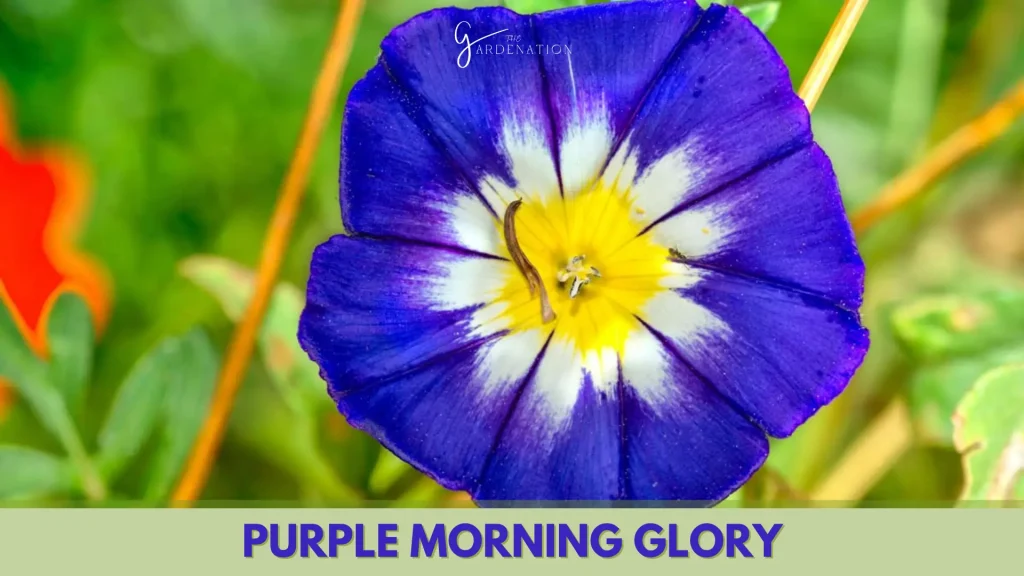
Ipomoea purpurea
- Mature Size- 4-10 ft wide and 6-10 ft high
- Hardiness Zone- Adapted to all zones
- Category- Twining
Purple morning glory is known for its vivid purple flowers and even bi-colored varieties are available. Another distinct feature about its flower describing its name is it opens during the morning and closes in the afternoon, flowering throughout summer and fall too. It is an annual fast growing climber plant.
Like other varieties it also prefers full sun to partial shade in well-drained soil. It is a versatile species that can tolerate a variety of soil conditions and is good for containers due to its small size. But in pots frequent watering especially during summer is required. Its self seeding ability might affect the area but overall growing this variety is a unique experience as it blooms in the morning and closes in the afternoon admiring nature.
6. Bluebell Vine
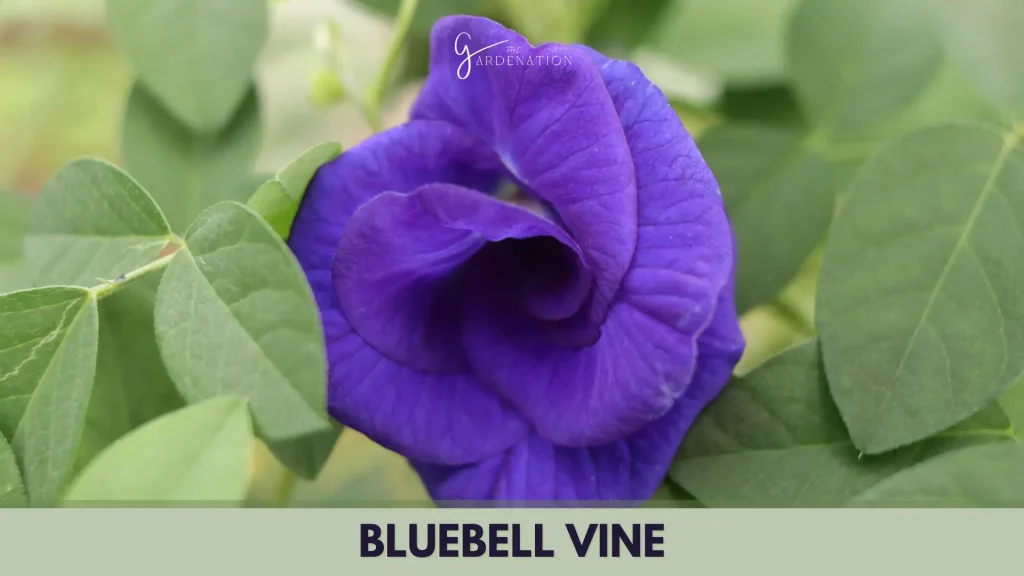
Clitoria ternata
- Mature Size- 3-6 ft spread, climb 20-30 ft
- Hardiness Zone- 9-11
- Category- Twining/ Evergreen
Bluebell vine like other climbers doesn’t produce regular looking flowers. But one can enjoy bell-shaped blue-purple colored flowers in the garden after planting this variety. Typically it blooms during spring and summer but in warm climates year round blooming can be witnessed making it a more wonderful variety. These flowers have no fragrance.
Bluebell vines are perennial in warm climate zones and annual in colder zones. Trellis and other climbing structures favor their growth. They require less care but proper pruning. It is a slow growing variety and frost sensitive in colder climates.
7. Queen’s Wreath
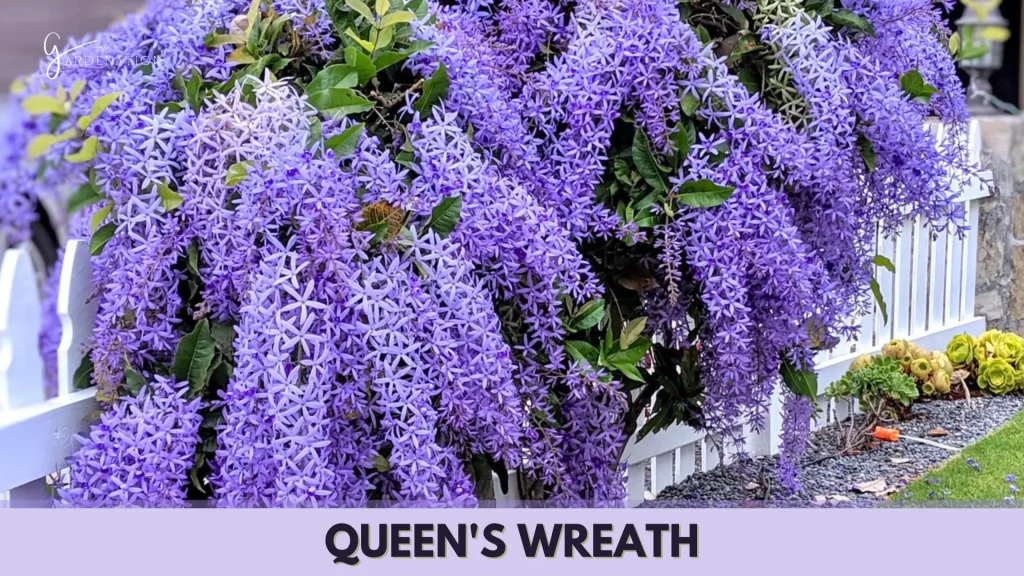
Petrea volubilis
- Mature Size- 10-20 ft width and 20-30 ft height
- Hardiness Zone- 9-11
- Category- Tendril Climber/ Evergreen Foliage
Queen Wreath is also known as purple wreath or sandpaper vine. It produces vibrant star shaped purple and white flowers. Flowering continues throughout the year in warm climates making it an excellent choice for a forever beautiful look in the garden.
It is evergreen in warm climates but can die back in colder zones. This variety is moderately growing and requires full sun and well drained slightly acidic soil conditions. Regular watering with no waterlogged conditions is recommended for the queen. Prune lightly after flowering to maintain shape and encourage new growth.
8. Butterfly Pea
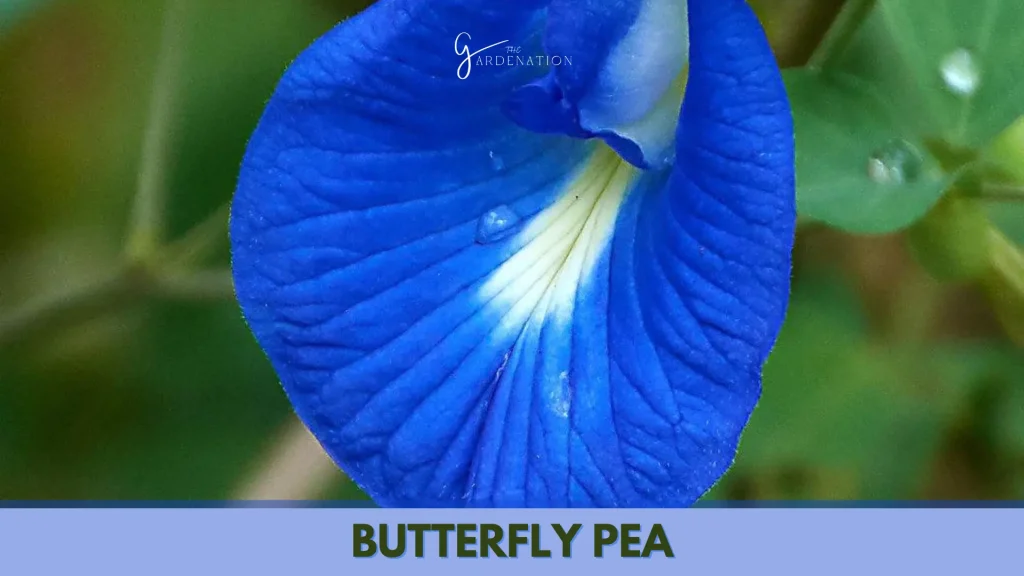
Centrosema molle
- Mature Size- 6-10 ft wide and 10-20 ft height
- Hardiness Zone- 8-11
- Category- Twining/ Evergreen Foliage
Butterfly pea is a beautiful climber valued for its vibrant blue flowers. The clusters of vibrant blue, purple, white or bi-colored flowers are produced. These non-fragrant blooms are produced throughout spring and summer for this variety.
The climber has moderate growth rate, perennial in warm climates and annual in colder ones. Best growth of this variety is seen in full sun and well drained fertile soil. Key features of this plant include– vibrant and blue flowers, attract butterflies and hummingbirds, tolerates a wide range of soils, and seeds may take longer to germinate.
9. Bougainvillea
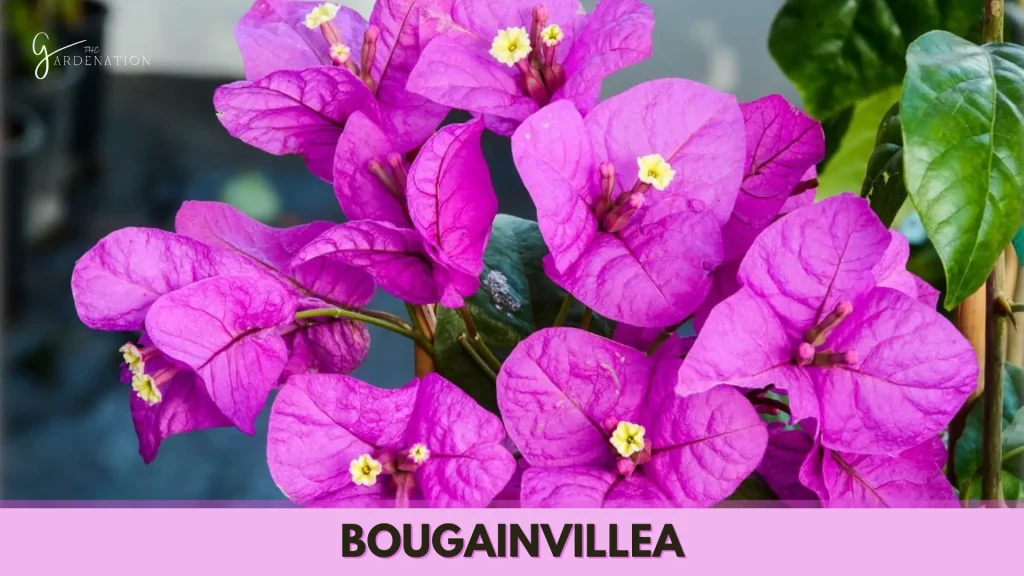
Bougainvillea spectabilis
- Mature Size- Spread 10-20 ft and climb 20-30 ft
- Hardiness Zone- 9-11
- Category- Clinging climbers
Bougainvillea is known for the presence of bracts that are often mistaken as flower petals. It contains beautiful flowers blooming throughout the summer and fall in warm climates. These flowers are covered with various colored pink, purple, red, orange and white structures. We have also written about: 22 Little Purple Flowers In Grass
They are clingers in nature containing adhesive thorns that stick to the surface and climb upward. They are evergreen in warm climates but behave as annual in colder zones. Full sun is essential for abundant production of flowers. One must note that these plants are sensitive to overwatering, so avoid water logging.
10. Lavender Trumpet Vine
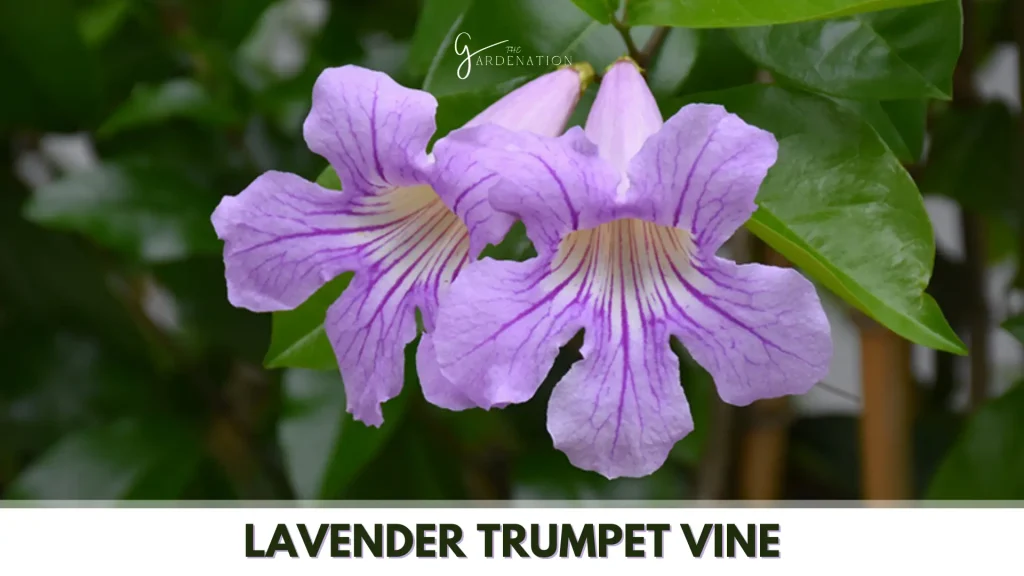
Clytostoma callisyrgioides
- Mature Size- 10-20 ft wide and 20-30 ft high
- Hardiness Zone- 9-11
- Category- Clinging Tendril Climber
Last in the list, but not the least, lavender trumpet vine a charming climber with cascading lavender colored trumpet like flowers admiring your garden attracting small wildlife populating the garden. Blooms are vivid lavender colored with deep purple veins. It offers continuous blooms throughout the summer and fall offering a long period of beauty in my sight.
It is a fast growing variety covering large areas quickly. About its habit, it is evergreen like many varieties in warm areas and annual in colder zones. Prefer similar conditions to above varieties for better growth. It is a beautiful and charming variety and needs proper pruning care for the best landscape. One must consider the invasiveness of climbers before planting.
This is a brief introduction to some of the purple flowered climbing plants best for the garden. It explains with proper care and maintenance one can have the best suited variety of climbing plant admiring and enhancing the look of the garden and also have a beautiful colored shade just above one’s head.
Frequently Asked Questions About Climbing Plants With Purple Flowers
Why are my Climbers not growing upward?
Climbers have flexible and less firm stems unlike trees. They need support for their upward movement. Although their branches or tendrils have sensory tips that detect the supporting body and wrap or hook themselves around or over them. Thus they grow the way we provide support to them.
What challenges can I face while growing Climber plants?
Various challenges one can face while growing climber plants. Although they are versatile plants but still if given improper sunlight and waterlogged conditions, they may wilt. Another problem is, climbers are an invasive type of plants that can affect other plants, so one must consider their invasiveness to the region while planting them.
Conclusion
Selecting climbers as an ornamental variety for the garden is an excellent choice. Firstly they can be used as vertical naturally looking walls and my favorite one is to use climbing plants as a natural green shade above my resting place in the garden. Different varieties of climbers produce different patterns and styles of beautiful flowers that can be proven as a valuable choice in beautifying the garden.

